Utilizing thermal imaging technology
27 April 2016 7:43pm
Can UAVs be Used to Measure Forest Quality?
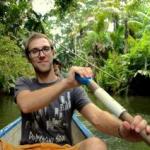 Tom Swinfield
Tom Swinfield
27 April 2016 12:00am
Conservation apps with a GPS focus
5 April 2016 3:27pm
26 April 2016 4:53pm
Another option is OruxMaps, free for android, not very intuitive but very powerful. But it's important to bear in mind that phone GPS accuracy can be lower than "traditional" GPS, specially when part of the sky is blocked.
Here is a test https://blogs.esri.com/esri/arcgis/2013/07/15/smartphones-tablets-and-gps-accuracy/
Calculating species abundance from Acoustic Data
26 January 2016 1:22pm
26 April 2016 10:45am
Hi,
I think Steffen provided a good summary of the challenges.
IMO, the two most promising methods of estimating animal density from acoustic monitoring are the "generalised random encounter model" (gREM) and an extension of spatially-explicit capture-recapture (SECR). These potentially solve Steffen's problems 2 and 3, i.e. linking acoustic counts to abundance (2), and converting abundance to density (3).
gREM, although theoretically possible, may be tricky in practice (especially obtaining an estimate of how wide an animal's acoustic signal is). See here:
http://onlinelibrary.wiley.com/doi/10.1111/2041-210X.12346/abstract
SECR is potentially very powerful, but depends on an independent estimate of calling rate (a problem Yu Shiu rightly picked up on). I think this would be entirely possible for a species you can find and observe (e.g. a frog or common bird species), but difficult for lots of cryptic, low density species (e.g. tigers!, as Courtney mentioned). See here:
https://www.researchgate.net/publication/272371302_A_general_framework_for_animal_density_estimation_from_acoustic_detections_across_a_fixed_microphone_array
However, gREM and SECR do not help with Steffen's first point (1) "quantifying the number of vocalisations from a stream of acoustic recordings". Others might be able to advise on the best approaches there. Perhaps this is primarily a software / data processing problem...?
In terms of sampling design (as Mariane and Courtney were interested in), it depends what your aims are. For occupancy (which is not equal to abundance/density), similar design principles to camera-trapping are fair (but taking into consideration Yu Shiu's point that the effective sampling area might be MUCH larger for an acoustic sensor than a camera trap, so camera spacing will have to be larger too). For gREM, you can fairly flexible about sampling design (repeated detections of the same individual are not a problem), but your sensors should be set randomly in space (with respect to animal movement), not along trails etc. For SECR, you don't have to set your sensors randomly, but sensors must be close enough together for repeated detections of the same call in multiple sensors simultaneously (this design constrasts, therefore, with an occupancy design).
Hth,
Ollie
26 April 2016 11:59am
Hi Stephanie,
This is an interesting thread. For those interested in the topic, and forgive me for the blatant self-promotion of work, a Biological Reviews 2013 paper on the topic can be downloaded here http://www.creem.st-and.ac.uk/decaf/outputs. Additional case studies papers as well as a more general public paper in Acoustics Today are also available for download from the link. This link is the outputs page from project DECAF, dedicated to estimating animal density from passive acoustic fixed sensors, using cetaceans as case studies. The methods have been far more developed and used in the cetacean community, but I suspect a wider use in terrestrial environments will occur in the coming years. A key hurdle is perhaps the dynamics involved in acoustic cue rate production, but the issues will be much easier to tackle in terrestrial environments than in the marine environments we have been working on.
Hope this is helpful,
Tiago
26 April 2016 12:13pm
Hi Tiago,
Thank you for sharing this paper and contributing your experience to the thread. Blantant self promotion, as you put it, is more than welcome when the work you're pointing to is such a helpful resource!
Cheers,
Stephanie
What to you is the biggest small problem with using UAVs in the field?
24 February 2016 7:47pm
5 April 2016 5:17pm
Wait, can you implement the range extenders in DJI systems? Is it costly in order to do so?
5 April 2016 5:58pm
jprobert,
Due to the proprietary nature of DJI, no the antenna tracker listed above cannot be added easily. Some engineering would need to go into hacking DJI. I'm not sure if you can get the telemetry data from DJI's app or ground control station. If so, one could parse the telemetry data and feed the GPS location into the open source tracker. You could also add another radio on board which transmits the GPS from the UAV. However, this is not the most efficient way and will cost some flight time for the added weight and power consumption.
Without hacking DJI or doing some digging, you could replace the antennas on the hand controller and UAV with higher gain antennas. This could improve range, but would limit the directions you could fly(directional antenna).
I will look into data provided by DJI and see what it possible.
26 April 2016 9:34am
I agree that it is likely that a dirigible would probably struggle in a lot of common mapping settings. People do use kites though. If you are interested in developing the flight control systems for dirigibles though I would also suggest that the best place to start is Ardupilot.
Migration monitoring app
25 April 2016 1:36pm
Text Messages from Teenage Gannets
 Jana W. E. Jeglinski
Jana W. E. Jeglinski
25 April 2016 12:00am
Assessment of Detection and Tracking Dog Programs in Africa
5 April 2016 7:43pm
15 April 2016 5:45pm
Hi Rachel, the link seems to be broken, fyi.
Marie
18 April 2016 9:41am
Hi Marie,
Thanks for alerting us to a possible broken link. I've just double checked both links Rachel shared and they both appear to be working. Just in case, the links are:
Working Dogs for Conservation: http://wd4c.org/
Assessment of Detection and Tracking Dog Programs in Africa (PDF): http://files7.design-editor.com/90/9024931/UploadedFiles/520bd328-b718-423f-b041-da20b254e24a.pdf
24 April 2016 3:22am
Thanks!
Is Google’s Cloud Vision useful for identifying animals from camera-trap photos?
 Aditya Gangadharan
Aditya Gangadharan
20 April 2016 12:00am
Deterring bears while backpacking
5 April 2016 3:15pm
19 April 2016 3:32pm
Ho John,
That's a great idea and thanks for sharing, but as you said, limitations on battery and speaker capacity abound. Might anyone else have any thoughts on how we could use apps to prevent HWC? There are apps that provide the ability to track wildlife through satellite collars for monitoring purposes. Is anyone aware of whether this type of app is being used also for HWC prevention using geo-fencing through collars or other means? Thanks.
Nilanga
ZSL Symposium: Space - the final frontier for biodiversity monitoring?
19 April 2016 2:29pm
Request for GPS based animal movement data
11 March 2016 8:26am
13 April 2016 4:27pm
Gautam,
You can join ebird.org and make a request to download their data that contains GPS data for birds.
Jason
13 April 2016 4:50pm
There's also movebank, which is a repository fo wildlife tracking information.
Wildlife Crime Apps
13 April 2016 3:46pm
Going into Business for Wildlife Conservation
13 April 2016 12:31pm
Automated Forest Restoration with Drones
10 March 2016 4:59pm
13 April 2016 10:56am
Hi Lot, great to see you here too.
Collecting Your Opinions about Drones
11 April 2016 6:52pm
12 April 2016 9:26am
Hi Sean,
Thanks for sharing your survey - is there a specific date you'll be closing the survey?
It'd be great if you could share the results of the survey here, as I (for one) will be quite interested to see what comes back.
Cheers,
Steph
ContentMine: Mining Helpful Facts for Conservation
 Jenny Molloy
Jenny Molloy
5 April 2016 12:00am
Games for change Climate Challenge: A $10,000 game design competition
17 March 2016 2:03pm
4 April 2016 9:33am
Hah! I just logged in to post this. I talked with the G4C people the other day. Thanks fo beating me to it.
Sat 2 Apr: Science Makers: Wildlife and conservation technologies
29 March 2016 2:24pm
WCS Climate Adaptation Grants
29 March 2016 12:00am
Solar powered drone for conservation
16 March 2016 4:17pm
26 March 2016 12:03pm
Hey Gregg,
The project looks cool!
Just wondering how much you envisage the load carrying capacity of the drone to be? So being able to carry cameras, GPS, etc.
Also, do you see the price coming down later? $5000 sounds quite steep...
And finally, have you thought about creating it as an open source project? Since all the perks at this points are mostly symbolic, this way people would be more compelled to contribute.
Have a nice day,
Daniel
28 March 2016 12:27pm
Hi Daniel
Thanks for the interest in the project.
The load carrying capacity will be a few kgs. The battery I've sized at this stage is around 2kgs and should allow it to fly over night, but if this storage is increased in future it will impact the other loads. It is a tricky trade-off between flight time and capability.
I'm hoping to include both visual and thermal cameras on a gimbal but they will need to be miniature versions (adds to cost). The drone will definitely include GPS/autopilot and I'm also hoping to include onboard image processing in future so the drone can send an alarm when it notices something out of place. The video feed will also need to be encrypted so that poachers cannot use the drone as their own scouting vehicle.
The price tag of $5000 is for the first few prototypes and will come down with mass production and buying in bulk. I don't see it dropping much below $3000-4000 at current equipment prices though. For instance, the solar PV cells and charge circuit alone will cost around $1000 and the cost of even the cheap uncooled microbolometer therml imagers is over $1000. This isn't an average consumer drone but I've tried to keep the costs down as much as possible so it's feasible. I've also considered offering a stripped down drone of just the charging circuit and airframe so that people can add their own equipment and autopilot etc.
In terms of the perks, I tried to model this campaign after other campaigns that had a product already, which has been a mistake. The build diary included in some of the perks was my attempt at making it open source. I am considering reworking all the perks as it is unlikely to get any funding at this stage.
Thanks for the valuable feedback. Please let me know if you have any other questions or comments.
Cheers,
Gregg
Eggs Eggs and more Eggs
2 March 2016 1:05pm
24 March 2016 4:42pm
Latest news about this project was picked up by the BBC world service for a short interview
http://www.bbc.co.uk/programmes/p03nwl8g
You can also read more here:
http://spectrum.ieee.org/geek-life/hands-on/build-an-electronic-vulture-egg
Social Tech Seed: Applications now open
23 March 2016 3:59pm
NOAA Webinar 14th April: Ocean Exploration and MPAs - Priorities, Technological Advances and Partnership
21 March 2016 2:28pm
Indonesian Peatlands and the Need for New Monitoring Technologies
20 March 2016 6:15pm
How can technology help reduce manatee boat strikes?
9 February 2016 4:42pm
18 March 2016 5:23pm
Hi John,
Have you checked out Whale Alert? There may be some scope for applying/adapting the same technology for averting manatee strikes by applying it to the recreational boating sector.
Best regards,
Gavin

Underwater sensors
18 March 2016 12:39am
Could Big Data Have Saved Cecil the Lion?
4 January 2016 12:07pm
12 February 2016 7:16pm
It's very interesting what you say about the strength of a name. I do think that anthropomorphism can be a good thing in the case of conservation. By giving Cecil a name and a life story (incidentally a very cosy British name, which is interesting in itself), it brings the issue into emotional focus. We are attracted to characters and stories, not data. The plight of a named lion strikes a stronger chord than the numbing statistic of 600 "un-named" lions dying every year.
So do we care more about nature if we make anthropomorphise it? I think yes, as it creates a relatable personal connection with our own lives.
I'd like to get in touch with you next week as this is an area I am very interested in exploring and I hope I can be of help. Paul
14 March 2016 4:37pm
We're just starting to look a lot at Storytelling in Wildbook (http://www.wildbook.org).
This is what a data profile looks like in Wildbook:
http://www.whaleshark.org/individuals.jsp?number=A-001
While we allow for basic anthropomorphism via nicknaming, it's still a very data centric view of what a combined group of reserchers knows about the animal.
We have experimented with social media profiles which interestingly have an analogous data schema as mark-recapture:
http://fb.wildme.org/wildme/public/profile/WS-A-001
But we want to go ever further with storytelling mediums (e.g., story maps?) that can be automated from scientific data input, especially where cit sci data and reserch data can be reliably mixed.
So in addition to a name, we want to build a relationship through a portrayal of its life history and even potentially a view of the social network of the animal participates in (if such data can be shared safely.).
16 March 2016 7:22am
That's great Jason. I think your approach can be very successful. I'm a little bit familiar with Wild Book through my contacts at IBEIS, who I believe you work with quite closely. I'd love to see how the work we are doing at Internet of Elephants can incorporate whale shark data. I'll message you separately to discuss.
The Spatial Monitoring and Reporting Tool (SMART)
 Alexa Montefiore
Alexa Montefiore
15 March 2016 12:00am
An Internet of pigeons?
14 March 2016 4:16pm

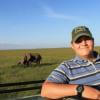











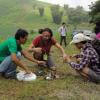



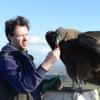




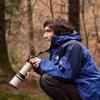
26 April 2016 2:34pm
My goto application is CyberTracker. It can be adapted on your desktop exactly to record the data that you want (including pictures and GPS reading, but not compass direction).